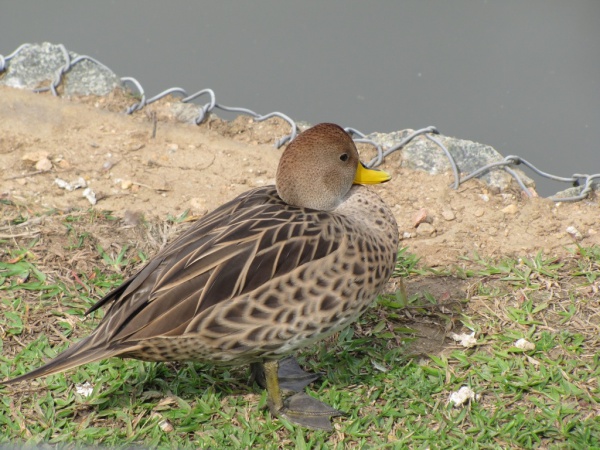Facts About Yellow-billed pintail
The yellow-billed pintail, a delightful dabbling duck native to South America, is a member of the Anas genus. Three recognized subspecies exist. This duck is easily identifiable by its brown head and neck, a yellow bill with a distinctive black tip and stripe, a pointed brownish tail, grayish-brown upper wings, and a buff-brown body speckled with black spots. Unlike the yellow-billed teal, the yellow-billed pintail is larger, features prominent bill stripes, and generally avoids forming large flocks.
These ducks are distributed across South America, the Falkland Islands, and South Georgia. The smallest subspecies, the South Georgia pintail, is endemic to South Georgia, with an estimated population of 1,000 to 1,500 pairs. The Chilean or brown pintail is more widespread, inhabiting mainland South America and the Falkland Islands, with a population exceeding 110,000. Sadly, Niceforo's pintail, once found in central Colombia, is believed to have been extinct since 1952.
These ducks thrive in diverse habitats, ranging from high-altitude lakes to lowland rivers and coastal areas in open country. For nesting, yellow-billed pintails build their nests on the ground, cleverly lining them with grass and down, and concealing them in vegetation near water. They typically lay clutches of 4 to 10 eggs.

 Paraguay
Paraguay